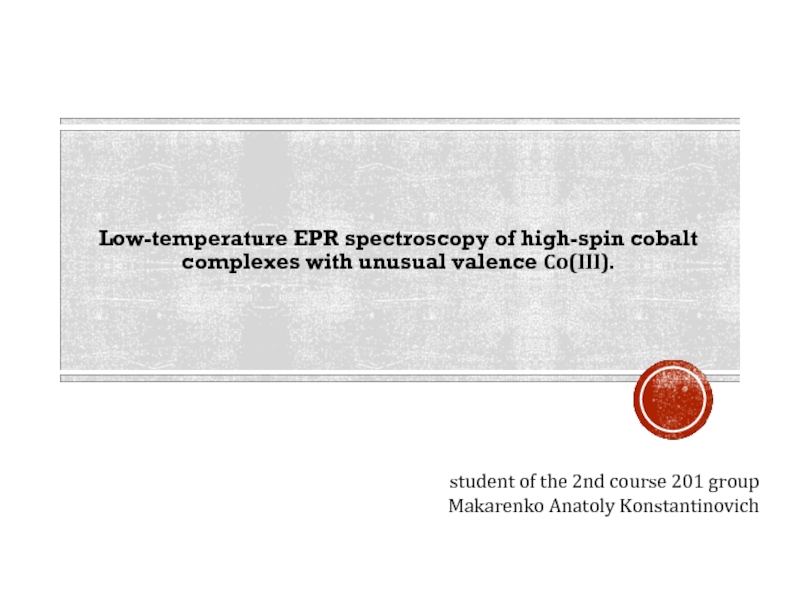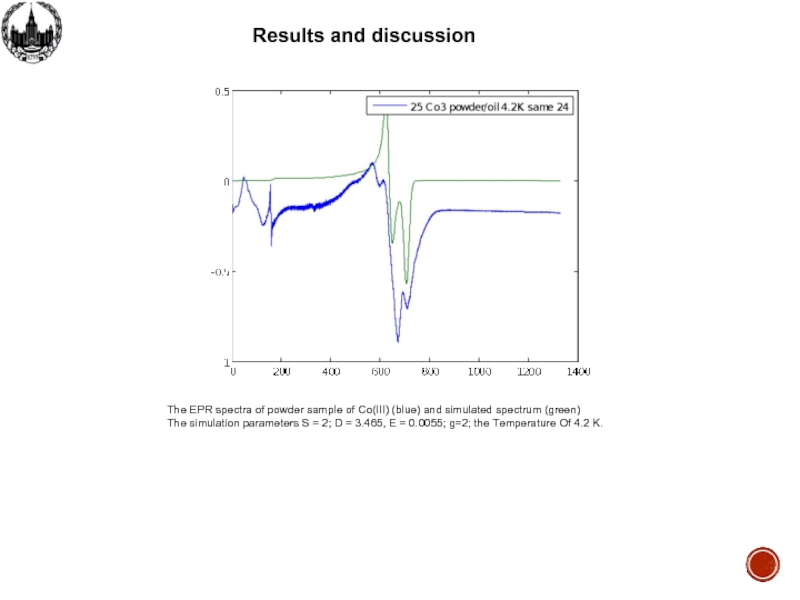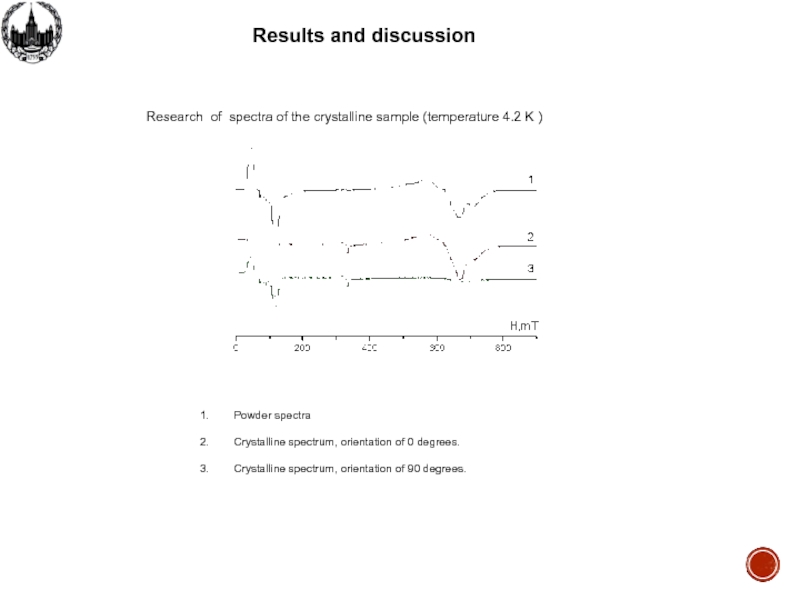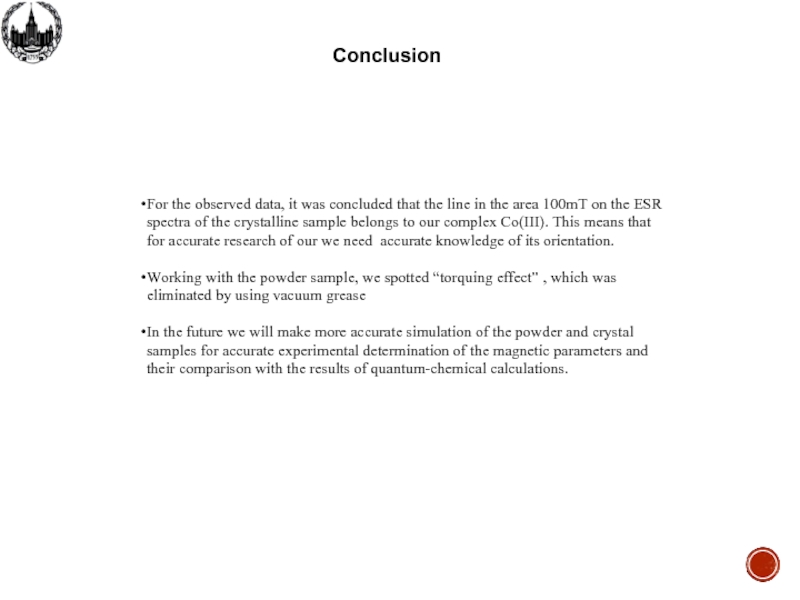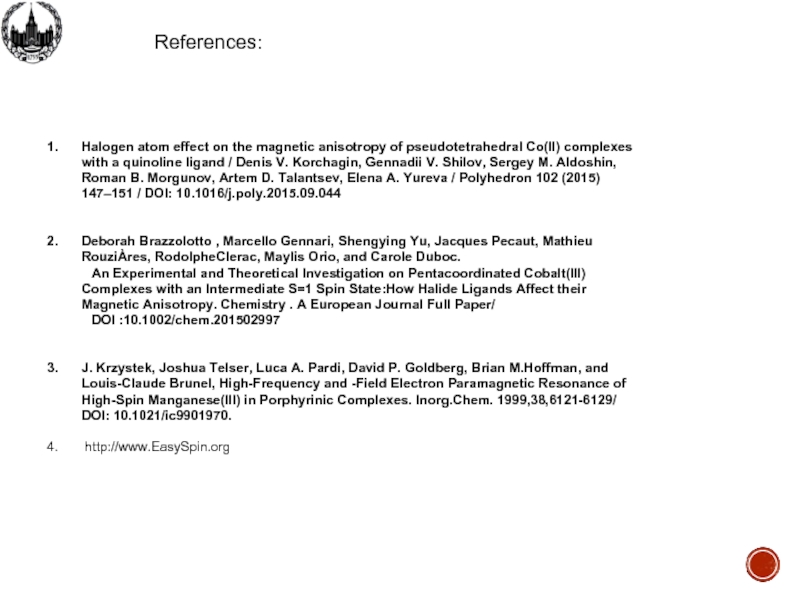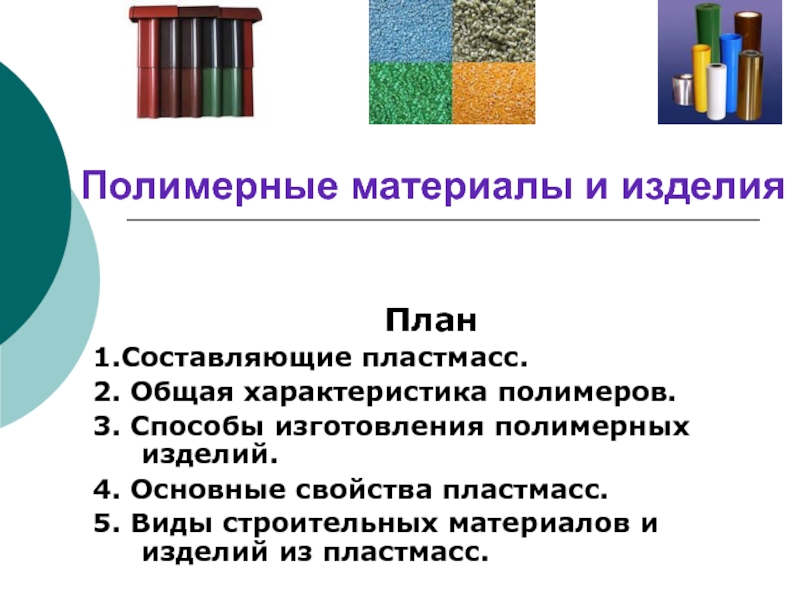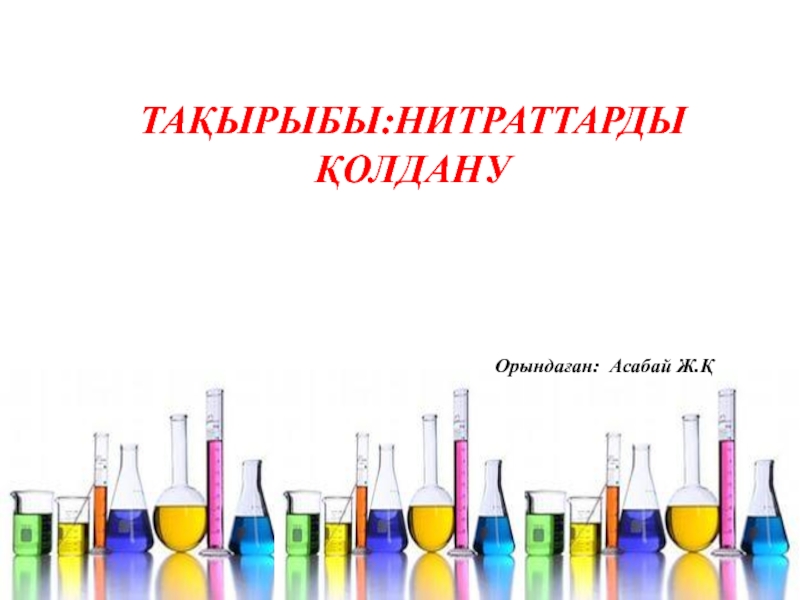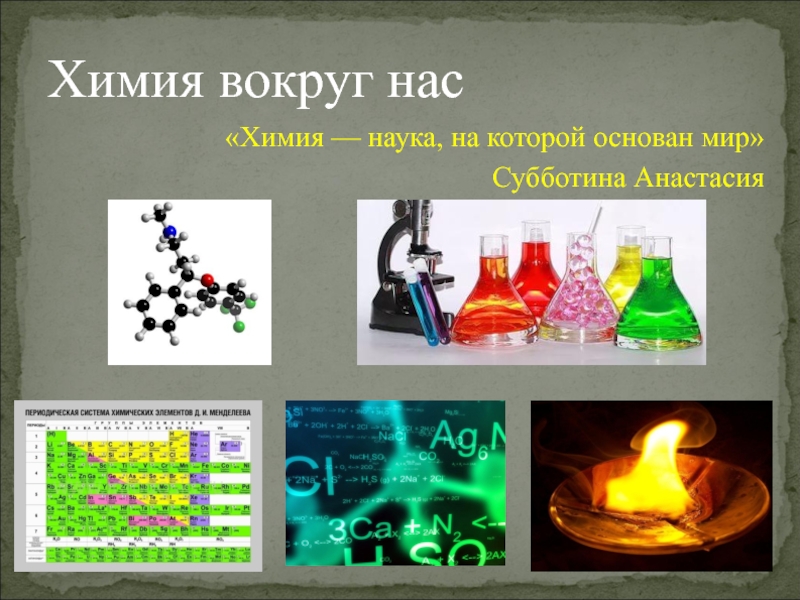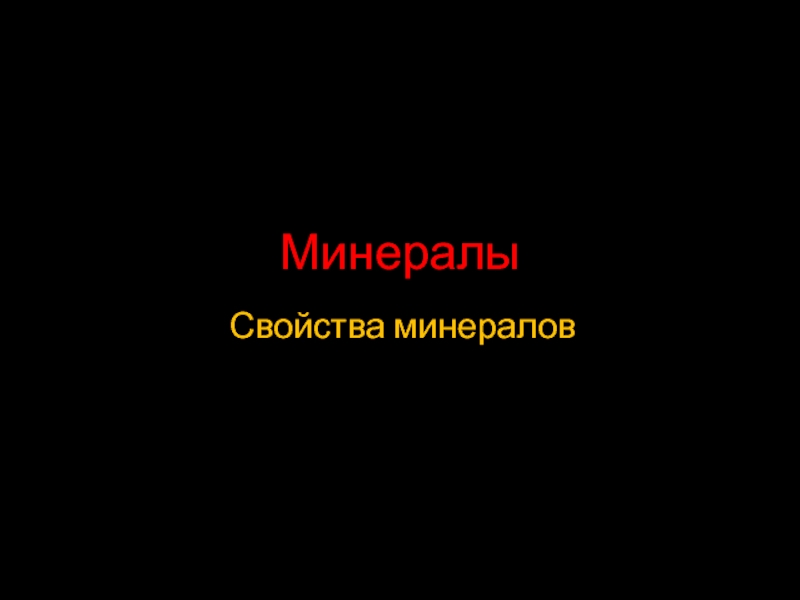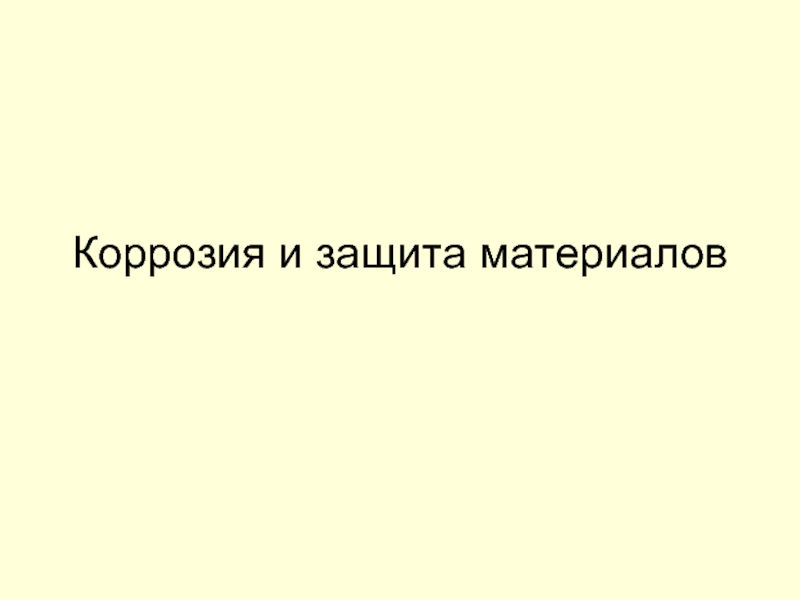of the 2nd course 201 group
Makarenko Anatoly Konstantinovich
- Главная
- Разное
- Дизайн
- Бизнес и предпринимательство
- Аналитика
- Образование
- Развлечения
- Красота и здоровье
- Финансы
- Государство
- Путешествия
- Спорт
- Недвижимость
- Армия
- Графика
- Культурология
- Еда и кулинария
- Лингвистика
- Английский язык
- Астрономия
- Алгебра
- Биология
- География
- Детские презентации
- Информатика
- История
- Литература
- Маркетинг
- Математика
- Медицина
- Менеджмент
- Музыка
- МХК
- Немецкий язык
- ОБЖ
- Обществознание
- Окружающий мир
- Педагогика
- Русский язык
- Технология
- Физика
- Философия
- Химия
- Шаблоны, картинки для презентаций
- Экология
- Экономика
- Юриспруденция
Low-temperature EPR spectroscopy of high-spin cobalt complexes with unusual valence Co(III) презентация
Содержание
- 1. Low-temperature EPR spectroscopy of high-spin cobalt complexes with unusual valence Co(III)
- 2. Structural view of the synthesized complex Experimental
- 3. Results and discussion The EPR spectra
- 4. Results and discussion The EPR spectra of
- 5. Results and discussion Research of the angular
- 6. Results and discussion Powder spectra Crystalline
- 7. Conclusion For the observed data, it was
- 8. References: Halogen atom effect on the magnetic
Слайд 1
Low-temperature EPR spectroscopy of high-spin cobalt complexes with unusual valence Co(III).
student
Слайд 2Structural view of the synthesized complex
Experimental methods and samples for research
Used
samples:
-powder in a vial filled with helium
-powder in the vacuum oil
-monocrystalline sample
-powder in a vial filled with helium
-powder in the vacuum oil
-monocrystalline sample
Слайд 3
Results and discussion
The EPR spectra of powder sample of Co(III) (T=15K)
.
1. Spectra without turning
2. Spectra rotate 90 degrees.
3. Spectra rotate 90 degrees.(repeat)
4. Spectra with the use of vacuum oil without turning.
(*- impurities from the glass).
1. Spectra without turning
2. Spectra rotate 90 degrees.
3. Spectra rotate 90 degrees.(repeat)
4. Spectra with the use of vacuum oil without turning.
(*- impurities from the glass).
Слайд 4Results and discussion
The EPR spectra of powder sample of Co(III) (blue)
and simulated spectrum (green)
The simulation parameters S = 2; D = 3.465, E = 0.0055; g=2; the Temperature Of 4.2 K.
The simulation parameters S = 2; D = 3.465, E = 0.0055; g=2; the Temperature Of 4.2 K.
Слайд 5Results and discussion
Research of the angular dependence, Temperature 16K.
Experimental spectra
Simulated spectra
The simulation parameters:
S = 2; D = 3.4, E = 0.102 ; g=2;
The simulation parameters:
S = 2; D = 3.4, E = 0.102 ; g=2;
Слайд 6Results and discussion
Powder spectra
Crystalline spectrum, orientation of 0 degrees.
Crystalline spectrum, orientation
of 90 degrees.
Research of spectra of the crystalline sample (temperature 4.2 K )
Слайд 7Conclusion
For the observed data, it was concluded that the line in
the area 100mТ on the ESR spectra of the crystalline sample belongs to our complex Co(III). This means that for accurate research of our we need accurate knowledge of its orientation.
Working with the powder sample, we spotted “torquing effect” , which was eliminated by using vacuum grease
In the future we will make more accurate simulation of the powder and crystal samples for accurate experimental determination of the magnetic parameters and their comparison with the results of quantum-chemical calculations.
Working with the powder sample, we spotted “torquing effect” , which was eliminated by using vacuum grease
In the future we will make more accurate simulation of the powder and crystal samples for accurate experimental determination of the magnetic parameters and their comparison with the results of quantum-chemical calculations.
Слайд 8References:
Halogen atom effect on the magnetic anisotropy of pseudotetrahedral Co(II) complexes
with a quinoline ligand / Denis V. Korchagin, Gennadii V. Shilov, Sergey M. Aldoshin, Roman B. Morgunov, Artem D. Talantsev, Elena A. Yureva / Polyhedron 102 (2015) 147–151 / DOI: 10.1016/j.poly.2015.09.044
Deborah Brazzolotto , Marcello Gennari, Shengying Yu, Jacques Pecaut, Mathieu RouziÀres, RodolpheClerac, Maylis Orio, and Carole Duboc.
An Experimental and Theoretical Investigation on Pentacoordinated Cobalt(III) Complexes with an Intermediate S=1 Spin State:How Halide Ligands Affect their Magnetic Anisotropy. Chemistry . A European Journal Full Paper/
DOI :10.1002/chem.201502997
J. Krzystek, Joshua Telser, Luca A. Pardi, David P. Goldberg, Brian M.Hoffman, and Louis-Claude Brunel, High-Frequency and -Field Electron Paramagnetic Resonance of High-Spin Manganese(III) in Porphyrinic Complexes. Inorg.Chem. 1999,38,6121-6129/ DOI: 10.1021/ic9901970.
http://www.EasySpin.org
Deborah Brazzolotto , Marcello Gennari, Shengying Yu, Jacques Pecaut, Mathieu RouziÀres, RodolpheClerac, Maylis Orio, and Carole Duboc.
An Experimental and Theoretical Investigation on Pentacoordinated Cobalt(III) Complexes with an Intermediate S=1 Spin State:How Halide Ligands Affect their Magnetic Anisotropy. Chemistry . A European Journal Full Paper/
DOI :10.1002/chem.201502997
J. Krzystek, Joshua Telser, Luca A. Pardi, David P. Goldberg, Brian M.Hoffman, and Louis-Claude Brunel, High-Frequency and -Field Electron Paramagnetic Resonance of High-Spin Manganese(III) in Porphyrinic Complexes. Inorg.Chem. 1999,38,6121-6129/ DOI: 10.1021/ic9901970.
http://www.EasySpin.org
